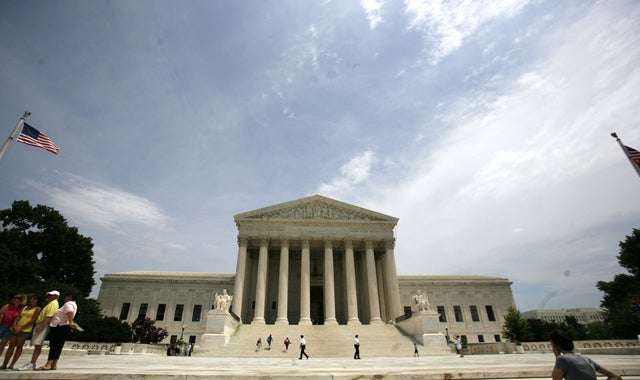If the individual mandate is the blockbuster issue before the Court, Medicaid and severability may be sleeper hits that ultimately have tremendous impact.
If the Court strikes down the mandate, then what is to be done with the Russian novel-length ObamaCare? Should the Court just tear out the few pages that contain the mandate, or the mandate plus related sections (whatever that means), or is the mandate so central to the law that the Court should throw out the whole thing? This is what in legal jargon is known as “severability.” To answer this question, the Court looks to what Congress intended—namely, would Congress have preferred a health care bill without a mandate to no health care bill at all, or would ObamaCare work as Congress intended stripped of the mandate. Here’s what to watch for at today’s oral arguments:
First, what do the justices think about the convoluted legislative maneuvering that led to Obamacare’s passage with hardly a vote to spare? Recall that Congress repeatedly tweaked the legislation to arrive at a favorable (if fictional) budget score, meaning that nearly all provisions are (at least in terms of Congress’s budgetary goal) interrelated. The final bill squeaked through the House with the President lobbying furiously to save the whole enterprise. There were votes traded in exchange for the “Cornhusker Kickback” and the “Louisiana Purchase,” and the whole deal was capped off with a dubious use of a budget reconciliation maneuver to avoid a filibuster. Will the Court really believe, given all of this, that Congress would have been happy to pass ObamaCare without the mandate, or that given this delicate budget scoring, that ObamaCare will work as Congress intended with the mandate excised?
Second, what about the policy? The government’s strategy to salvage the mandate has been to paint a picture of the health care and health insurance markets as complicated beyond belief, with every jot and tittle of Obamacare a part of Congress’s intricate regulatory scheme to achieve universal coverage. But that strategy may backfire if the Court strikes down the mandate, because none of the justices have any interest in wading through thousands of legislative provisions to figure out, one at a time, which are too closely linked to the mandate to survive without it. No doubt the justices have already identified some provisions, besides those identified by the government, that play off of the mandate in one way or another. (If the justices need a few ideas, my colleague Ed Haislmaier collected about 10 provisions of ObamaCare that could be on the chopping block here.) And if all of this just gets too messy, will the government seek a lifeline by asking the Court to remand the case to a lower court to decide these issues? Look for pointed questions.
After hearing the argument on severability, the Court will turn in the afternoon to Obamacare’s Medicaid expansion and whether the federal government may rely on its “spending power” (there is, of course, no “spending clause” in the Constitution) to coerce states to do its bidding. The Court has long maintained that there is some limit on this power, but it has never actually said what that limit is, exactly.
And that’s the first thing to watch for—how well does Paul Clement, representing the states, describe a workable limiting principle for the “spending power” that leaves unscathed other exercises of “cooperative federalism” like the Clean Air Act and highway funding. Are the justices confident that they could, if necessary, draw a line at all?
Second, will the justices be receptive to the states’ argument that, in addition to coercion, the Medicaid expansion effectively “commandeers” the organs of state government to carry out federal imperatives. Twice the Court has struck down federal laws on commandeering grounds, but the argument here is more complicated, given that the states’ initial entry into Medicaid was voluntary, even if (at this late date) their continued participation is basically required.
Third, Medicaid is massive—it’s the largest source of federal funding to the states—but which way does that cut? On the one hand, more money means more coercion. But on the other, the states may have trouble arguing that Medicaid is unlawful because the federal government has been too generous.
Fourth is the tone and tenor of the justices’ questions, which may matter the most in an area where there is little solid legal precedent. At base, will the justices agree with the states’ contention that Medicaid is a trap; that escape is impossible; that it threatens their long-term fiscal health; and that it undermines their dignity, rendering them wards of the federal government? Or will they buy into the federal government’s view that this is cooperative federalism through-and-through, a federal effort to solve a nationwide problem through the instrumentalities of the states?
And fifth, is there any hint that the Court will seek to avoid this question altogether? The most likely avenue for such an outcome would be if the Court struck down enough of the Medicaid expansion in its severability analysis that it no longer needed to reach this constitutional question. Pay particular attention to the Chief Justice on this issue, who frequently seeks narrow, consensus options.
